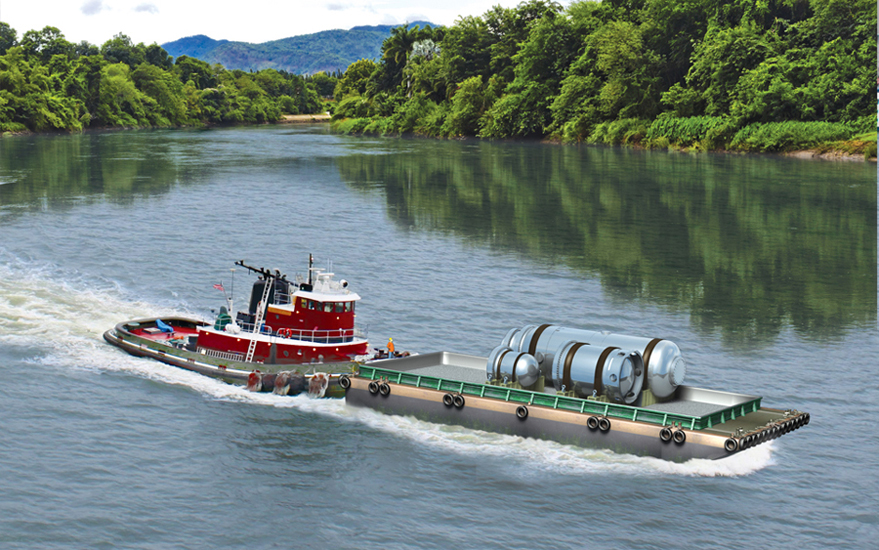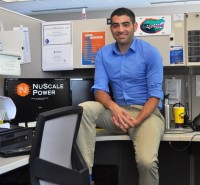About a decade in the making, the NuScale SMR offers a new and advanced carbon-free energy option. Scalable from 50 MWe to 600 MWe on a footprint of approximately 70 acres, the NuScale SMR offers walkaway-safe nuclear technology that is unique to the nuclear industry. As President Obama recently discussed in his farewell address, the tide of the clean energy revolution cannot be stopped and will continue to be an important force in this country. This unstoppable momentum to shut down carbon-emitting sources of electricity increases America's need for truly flexible and versatile carbon-free sources of baseload electricity, which NuScale is trying to bring to the table.
The reduced footprint of an SMR, as demonstrated in NuScale's submittal and pre-submittal engagement with the NRC to reduce the emergency planning zone (EPZ) for the plant, allows for the one-to-one replacement of soon-to-be retired coal power plants across the country, as well as allowing for the consideration of sites that would never have been applicable to a nuclear project prior. New markets for the nuclear industry can only be a good thing.
In a 2016 Third Way article, the think tank made note of over 50 companies around North America that are working on advanced or new nuclear reactor concepts. While some of these companies have chosen not to pursue American licensing with the NRC, many others are waiting with bated breath to see how the NuScale application progresses. The NRC licensing process is extraordinarily thorough and requires years of engagement and millions of dollars in cost. To many, those hurdles to overcome make the prospect of an NRC license seem like a very risky proposition for a small company or new startup. Additionally, it has been years since the last applications were reviewed, and those applications were still based on a similar flavor of light water reactor technology as opposed to the innovative SMR design offered by NuScale or some of the more advanced generation IV reactor designs being pursued around North America. It is my fervent hope and desire that a successful NuScale DCA will result in more companies pursuing NRC licenses and more nuclear options being offered to America, leading the way to the clean energy future we all desire.

NuScale Power's reactor and containment power modules can be delivered to sites by truck or, as seen here, by barge, opening up a wide variety of potential site locations. Illustration courtesy NuScale Power.
In the NuScale press release for the DCA submission, Steve Kuczynski, CEO of Southern Nuclear and Chairman of the Nuclear Energy Institute's New Plant Advisory Committee, said, "At Southern Company, we are building the first new-generation nuclear plants in the United States. We are committed to nuclear energy and we want to have NuScale SMR's as an option. We have worked with them for many years and look forward to the NRC certification." I hold the firm belief that offering more options to our utility partners can only be a good thing for the industry and the NuScale DCA submission is a first step into a brave new world with much more robust nuclear options, which would in turn also mean more nuclear jobs.
Building and operating an SMR would be a massive economic boon to any community. Nuclear power plants bring high paying jobs and taxes that create a major stimulus for local and broader regional economies. According to the Nuclear Energy Institute, a typical nuclear power plant could bring close to $500 million in stimulus to a community and the versatility offered by the NuScale SMR would allow for a range of communities to consider nuclear energy. Additionally, planning to be factory-built and shipped from a single location, the NuScale SMR supply chain will bring additional stimulus and jobs. Over the next decade, the submission of the NuScale DCA could result in thousands of high-paying, clean energy, American jobs.
On a personal note, I would like to congratulate the over 700 colleagues that worked on the 12,000 pages of technical information and supporting documents across 6 office locations spread around the world (not counting the support of around 50 vendors). After more than 120 meetings with the NRC and two million man hours of work, it has been an honor to be a small part of this monumental task.
 Brett Rampal is a nuclear engineer for NuScale Power in Charlotte, N.C. Brett received his masters and bachelors degrees in nuclear engineering from the University of Florida. He is chair of the ANS Young Members Group, and a member of ANS's Student Section and the Professional Development Coordination and Membership Committees.
Brett Rampal is a nuclear engineer for NuScale Power in Charlotte, N.C. Brett received his masters and bachelors degrees in nuclear engineering from the University of Florida. He is chair of the ANS Young Members Group, and a member of ANS's Student Section and the Professional Development Coordination and Membership Committees.




